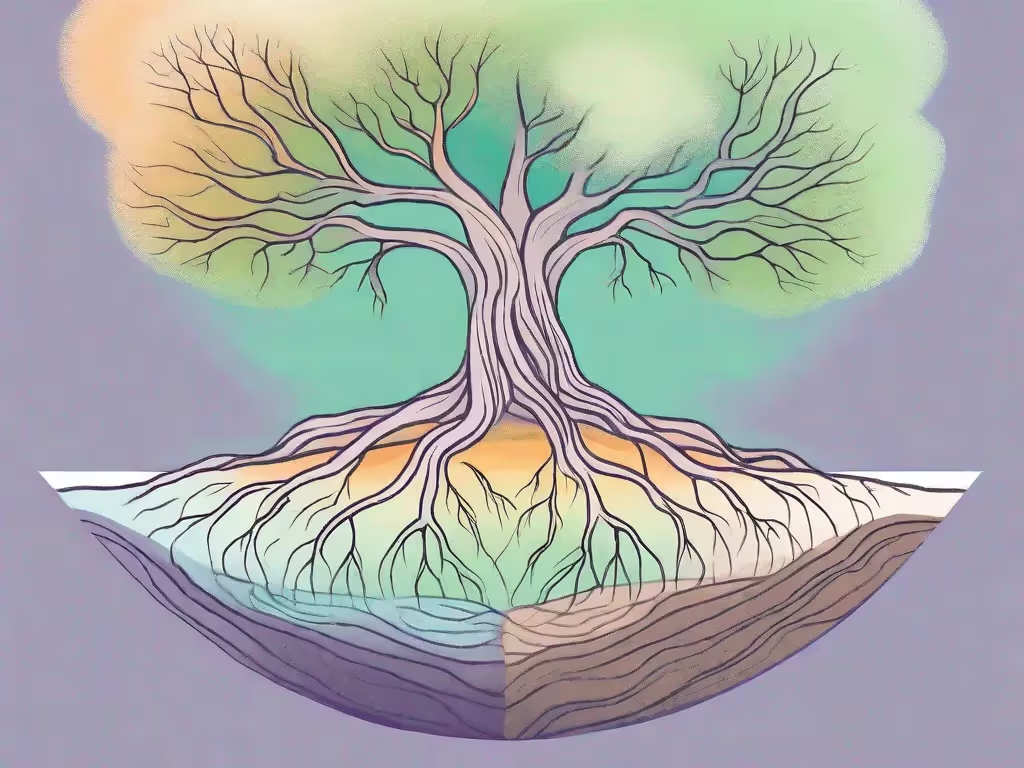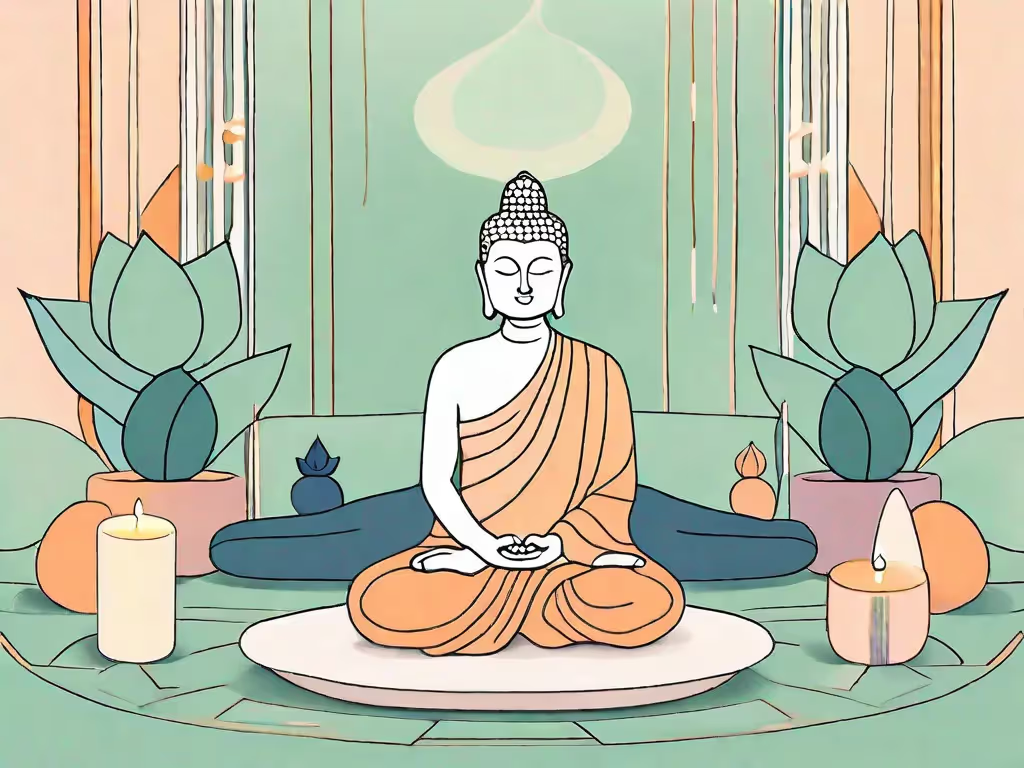Meditation is a powerful practice that allows individuals to cultivate mindfulness, reduce stress, and enhance overall well-being. While the art of meditation encompasses various techniques and approaches, one often overlooked aspect is the direction in which practitioners face during their sessions. Surprisingly, the direction we face can significantly impact our focus and concentration during meditation. In this article, we will delve into the importance of direction in meditation, explore different meditation practices, uncover the science behind facing east for meditation, discuss other factors that influence meditation, and provide tips for incorporating direction into your meditation routine.
Understanding the Importance of Direction in Meditation
In meditation, the direction we face aligns us with certain energies and helps establish a deeper connection with ourselves and the universe. Different cultures and belief systems have recognized the significance of direction for centuries. Ancient practices such as Vastu Shastra and Feng Shui emphasize the importance of facing specific directions during meditation to harness positive vibrations and energy flow.
When we sit down to meditate, we enter a sacred space within ourselves. Just as we carefully choose the environment in which we meditate, the direction we face plays a vital role in enhancing our experience. It is not simply a matter of convenience or personal preference; it is a deliberate choice that can profoundly impact our practice.
The Role of Geographical Orientation in Meditation
A key factor to consider when determining the best meditation direction is the geographical orientation. The magnetic field of the Earth interacts with our bodies, and certain directions can enhance the flow of energy within us. Some traditions suggest facing the magnetic north or south to create a harmonious balance in our system. However, meditation experts believe that facing east is the most favorable direction for a multitude of reasons.
When we face east during meditation, we align ourselves with the natural rhythm of the Earth. The sun rises in the east, symbolizing new beginnings and the birth of a new day. By facing this direction, we tap into the energy of the rising sun, which is believed to be associated with hope, new beginnings, and renewed energy. This alignment helps us awaken our senses, clear our minds, and enhance our focus, allowing us to delve deeper into our meditation practice.
Furthermore, facing east allows us to absorb the first rays of sunlight, which are rich in vitamin D. This essential vitamin not only strengthens our bones but also uplifts our mood and boosts our overall well-being. By incorporating the healing power of sunlight into our meditation practice, we create a holistic experience that nourishes both our body and soul.
How Direction Influences Focus and Concentration
Researchers have found that specific directions can have different effects on our concentration levels during meditation. When facing east, we align ourselves with the energy of the rising sun, which is believed to have a positive impact on our mental clarity and focus. The gentle warmth and soft glow of the morning sun create a serene atmosphere that encourages a calm and centered state of mind.
Moreover, the direction we face can also influence the flow of energy within our bodies. According to ancient wisdom, the body has energy channels called meridians, and these meridians are connected to different directions. When we face east, we activate the meridians associated with clarity, insight, and spiritual growth. This activation allows the energy to flow freely, removing any blockages and enhancing our ability to concentrate.
By consciously choosing the direction we face during meditation, we tap into the power of intention and align ourselves with the natural forces that surround us. This alignment creates a harmonious resonance between our inner and outer worlds, enabling us to experience a deeper sense of peace, clarity, and connection.
Exploring Different Meditation Practices
Meditation practices vary across cultures and traditions, each with its own unique techniques and preferred directions. Some meditation techniques involve visualizations, mantras, or focusing on specific objects, while others emphasize breath awareness or body sensations.
The Concept of Meditation in Different Cultures
Various cultures have embraced meditation as a means of self-discovery, spiritual growth, and inner peace. From ancient Indian practices like Yoga and Vipassana to Zen meditation in Japan, each culture has its own variances and techniques. These practices often incorporate specific directions to enhance the overall experience and connect with the essence of the tradition.
Various Techniques and Their Preferred Directions
Within each meditation practice, certain techniques may be associated with specific directions. For example, in Vedic meditation, a practice rooted in ancient Indian wisdom, facing east is encouraged. Similarly, in Taoist meditation, individuals may face north to align with the northern energy and the Universal Tao. The preference for different directions highlights the unique philosophies and intentions behind each technique.
The Science Behind Facing East for Meditation
While meditation has been practiced for thousands of years, modern science is beginning to uncover the underlying mechanisms behind its positive effects. Recent studies have found a correlation between facing east and increased alpha wave activity in the brain, which is associated with relaxed focus and mental clarity. These findings suggest that facing east during meditation can enhance our brain's receptivity to the practice.
The Magnetic Pull: Earth's Magnetic Field and Meditation
One of the key factors that contribute to the benefits of facing east is the Earth's magnetic field. Our bodies contain tiny compasses called magnetite, which can interact with the Earth's magnetic pull. By facing east, we align ourselves with the magnetic field, allowing for a smoother flow of energy and a heightened sense of well-being during meditation.
Solar Influence: The Significance of the Sun in Meditation
Another compelling reason to face east during meditation is the significance of the sun. The rising sun symbolizes new beginnings, vitality, and enlightenment. By facing east, we open ourselves up to the energy and warmth of the sun, inviting a sense of rejuvenation and inspiration into our practice.
Other Factors Influencing Meditation
While direction is an essential aspect of meditation, it is important to acknowledge that other factors can also influence our practice and overall experience.
The Impact of Environment and Surroundings
The environment in which we meditate can greatly enhance or hinder our ability to focus. Choosing a quiet and tranquil space, free from distractions, can significantly improve our meditation experience. By creating an atmosphere conducive to relaxation and introspection, we can better connect with our inner selves and achieve a deeper state of meditation.
The Role of Personal Comfort and Preference
Each individual has their own unique preferences when it comes to meditation. Some may find facing east particularly beneficial, while others may resonate more with a different direction. It is essential to listen to our bodies and choose the direction that feels most comfortable and aligned with our personal journey.
Tips for Incorporating Direction in Your Meditation Routine
If you are keen on incorporating direction into your meditation routine, here are some practical tips to help you get started:
Finding Your Ideal Meditation Spot
Experiment with different directions and notice how each direction makes you feel. Pay attention to subtle shifts in energy, focus, and overall experience. Over time, you will be able to identify the direction that resonates most with you and enhances your meditation practice. Remember, there is no right or wrong direction—trust your intuition and go with what feels best for you.
Adapting Meditation Practices for Different Directions
Once you have discovered your ideal direction, explore different meditation techniques and adapt them to align with your chosen direction. Experiment with different breathing exercises, mantras, or visualizations that enhance your connection to the direction you face. This intentional alignment can deepen your practice and take it to new heights.
In conclusion, the direction in which we face during meditation plays a significant role in enhancing focus and concentration. By aligning ourselves with specific directions, we can tap into the energies of the Earth, the sun, and the magnetic field, allowing for a more profound and transformative meditation experience. As you embark on your meditation journey, consider incorporating direction into your practice and explore the various techniques and directions that resonate with you. By doing so, you may find yourself on a path to greater self-discovery, clarity, and inner peace.
Experience the transformative power of meditation with Aura Health App. Unlock your full potential and achieve a state of balance and well-being. Download the app today and embark on a journey of self-discovery.
Aura is Your All In One App for Meditation, Mindfulness Wellbeing
Find peace every day with one app for your whole well-being. There is no one-size-fits-all solution to mental well-being. Aura is the first all-in-one wellness app that learns how to best help you. Discover an endless library of expert-created tracks for your well-being, all taught by the world’s best coaches, therapists, and storytellers. With Aura's personalized recommendations, you can find peace every morning, day and night.



.webp)






.avif)

%20(1).avif)


.avif)
.avif)
.webp)


.avif)


















































































































.avif)

















.svg)









